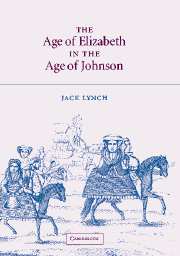Book contents
- Frontmatter
- Contents
- Preface
- Note on the texts and citation
- List of abbreviations
- Introduction
- 1 Struggling to emerge from barbarity: historiography and the idea of the classic
- 2 Learning's triumph: historicism and the spirit of the age
- 3 Call Britannia's glories back to view: Tudor history and Hanoverian historians
- 4 The rage of Reformation: religious controversy and political stability
- 5 The ground-work of stile: language and national identity
- 6 Studied barbarity: Jonson, Spenser, and the idea of progress
- 7 The last age: Renaissance lost
- Notes
- Bibliography
- Index
4 - The rage of Reformation: religious controversy and political stability
Published online by Cambridge University Press: 22 September 2009
- Frontmatter
- Contents
- Preface
- Note on the texts and citation
- List of abbreviations
- Introduction
- 1 Struggling to emerge from barbarity: historiography and the idea of the classic
- 2 Learning's triumph: historicism and the spirit of the age
- 3 Call Britannia's glories back to view: Tudor history and Hanoverian historians
- 4 The rage of Reformation: religious controversy and political stability
- 5 The ground-work of stile: language and national identity
- 6 Studied barbarity: Jonson, Spenser, and the idea of progress
- 7 The last age: Renaissance lost
- Notes
- Bibliography
- Index
Summary
In ecclesiastical no less than in civil polity, the eighteenth century looked back to the age of Elizabeth for a model. Christianity has made many glances backward, always in the hope of inspiring or regulating modern practice by the true sources of the faith. Most such movements have turned to Scripture or the early Fathers; both, for instance, played major parts in Lutheran and Calvinist theology. Where eighteenth-century Britons differed from most other looks backward was in their emphasis not on early apostolic Christianity, nor on Origen, Chrysostom, and Tertullian, but on the English Church of the sixteenth century.
It is impossible to understand, even to describe, the history of the seventeenth and eighteenth centuries without reference to the establishment of the English Church in the sixteenth century. The Reformation had a greater immediacy then than now; in many ways it was still in progress in England through 1689 – even, in attenuated form, as late as 1746, when the last serious Catholic aspirant to the English throne was defeated. Only then was the business begun by Henry VIII definitively settled and the Church of England secure. And no sooner were the old threats addressed than new threats to orthodoxy arose: Britons not only had to seek the precarious middle between Puritanism and Catholicism, but to account also for Methodists, Deists, Unitarians, and freethinkers of every stripe. Religious radicalism always seemed to loom just over the horizon.
- Type
- Chapter
- Information
- The Age of Elizabeth in the Age of Johnson , pp. 78 - 96Publisher: Cambridge University PressPrint publication year: 2002

